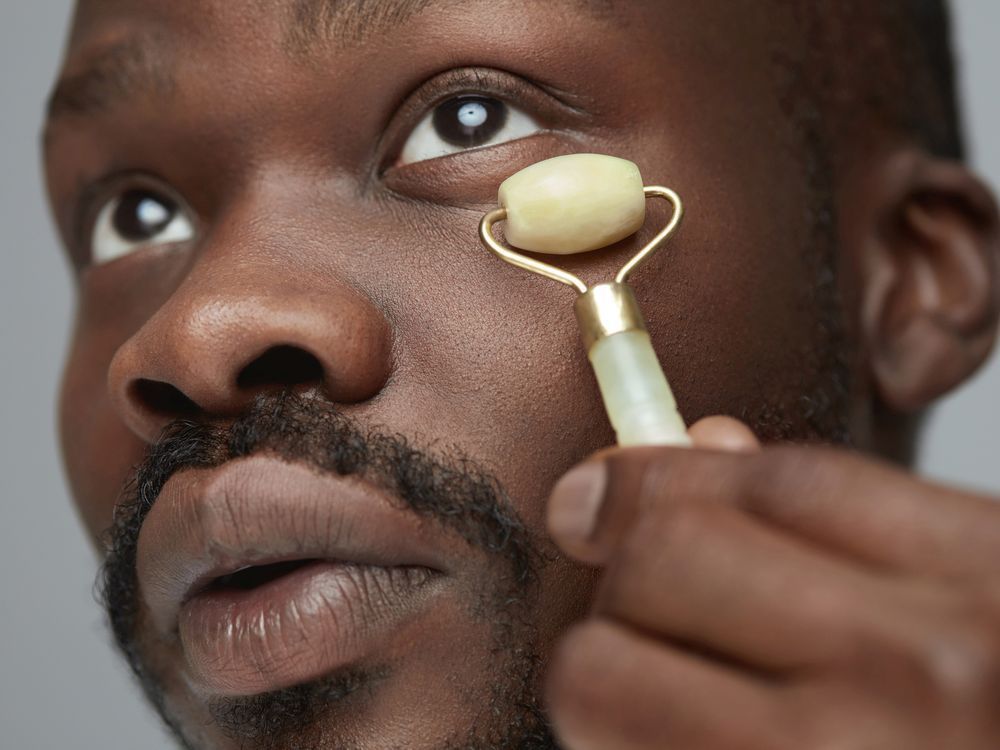the covid-19 pandemic has unleashed a thousand little stresses and irritations in day-to-day life as many of us struggle with work-life balance. home is no longer just home, but home-and-office and, well, let’s face it, the last year and a bit has been one gigantic exercise in just getting by. and now, we can add one more thing to the list: zoom face.
the guardian defines it as “a sort of reverse narcissus experience whereby contemplation of your own face leads only to dissatisfaction and despair.” you probably know the feeling, looking at your reflection on your screen each day and feeling as if you’ve rapidly aged.
are those new wrinkles? are the circles under my eyes getting darker? and what on earth is happening with my hair?the term “zoom face” was coined by dr. rajani katta, author of
glow: the dermatologist’s guide to a whole foods younger skin diet. in an interview with
cnn, she explained, “some of this is due to perception, what i call ‘zoom face.’ between the harsh lighting, the strange angles, and just staring at your face for hours on end, it can alter your perception of your own appearance.”stress and
poor sleep can leave an impact on our skin. but the dissatisifaction isn’t just skin deep.“our face is usually only one part of our sense of self and, now, it’s the only part,” explains catherine sabiston, a professor and canada research chair in physical activity and mental health at the university of toronto. “there is a lot of emphasis on our face throughout the day now … your face is front and centre on your screen and the screens of all the other meeting attendees, with a potential constant feeling that people can and may be judging us.”
i’ve got my eye on … me we’re not used to being able to essentially watch ourselves while engaging in conversation. that leads to an inevitable analysis of not only our skin and possible wrinkles, but also our facial expressions, with little option of turning it all off — depending on your boss, that is. in that sense, says sabiston, zoom functions much like “an all-day mirrored room, and mirrors have a long history of perpetuating negative emotions and perceptions of ourselves.”it sounds like a nightmare of a fun house. but since birth, we’ve had
a complicated history with mirrors. according to a 2019 article in the
frontiers in psychology journal, self-consciousness can be defined as our awareness of our body, and exists in the intersection between psychiatry, philosophy and neurophysiology. so what we see in the mirror, and how we process that image, has a profound impact on how we see and understand our self-image. and that itself is based on a long list of things, from our history with people, our body and our experiences, to how we feel about our work, our identity, our sexuality — even what we watched on netflix last night.
and it’s not just our faces taking a hit, by the way. our bodies are as well. when you’re able to toggle an “airbrush” effect on zoom, or “green screen” your background, you begin to feel as if you can filter yourself in much the same way you can in an instagram post. but you can’t edit yourself in real life — if only mascara were so powerful.“there is
consistent evidence on
the harmful effects of filters, because they provide a ‘costume’ to hide behind,” says sabiston. the user may end up adapting their thinking and cognition to be about praise and appreciation.“learning ways to appreciate your appearance, and balancing the importance of appearance versus the way your body performs, feels and functions is critical. reframing thoughts to redirect attention from appearance to performance is important, and avoiding self-criticism.”our self-evaluations may sway towards the negative, which is only heightened now due to having more time to spend online, comparing ourselves to our peers. the result is guilt and shame, which are also precursors to a negative body image.
fear of going back with more and more people getting vaccinated and some workplaces already encouraging heading back to the office, stress about reentering the real world is rising, as is the fear of that world seeing who you are now — a changed person, inside and outside as a result of experiencing
a global trauma.“this fear is obviously largely governed by the unknowns about illness and public health guidelines, but also about facing people socially, having a body attached to the face that has been front and centre for over a year — for many, a body that also displays the challenges of the pandemic with changes to body shape, size and appearance,” says sabiston.“many people have met new colleagues, bosses and teammates during the pandemic whom they have not seen physically. since our clothes, posture, make-up and lifestyle habits make up a major part of the way we present ourselves to others, there is a lot at stake for that ‘going back.’”but this is also a good time to challenge ourselves to shift the stereotypes tied to appearance and body perceptions, she adds, accepting that human bodies get tired and experience stress and sometimes we wear that on our faces.of course, shifting habits isn’t as simple as it sounds, but it is possible. make your virtual meeting’s gallery view as small as possible or untack your own box so you don’t have to see yourself, use sticky notes to write positive attributes about your body and leave them on the edges of your computer monitor so you can read them as you work. and try to limit alchohol and make healthy food choice and fit even small bouts of exercise into your day.“the emphasis needs to be on how we are functioning, what our bodies have endured over the pandemic, the ways we will move and socialize rather than how we look,” says sabiston.after all, making it through a pandemic is an achievement in itself — scars, stresses and all. and to echo an oprah winfrey phrase, “well hello, let’s celebrate that!”
sadaf ahsan is a toronto-based culture writer, editor and stereotypical middle child. she can be reached here.
 5 minute read
5 minute read









